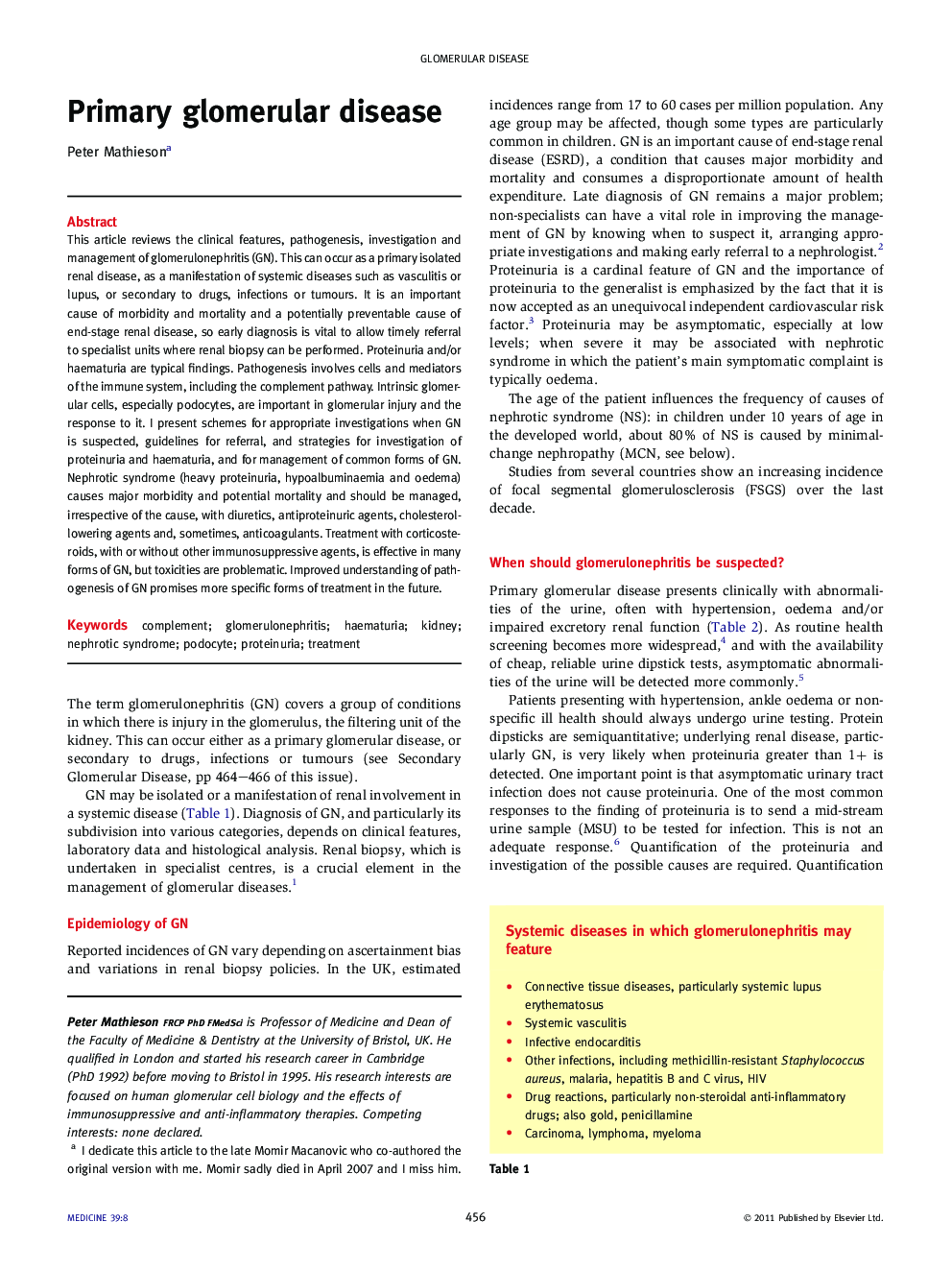| Article ID | Journal | Published Year | Pages | File Type |
|---|---|---|---|---|
| 3804133 | Medicine | 2011 | 8 Pages |
This article reviews the clinical features, pathogenesis, investigation and management of glomerulonephritis (GN). This can occur as a primary isolated renal disease, as a manifestation of systemic diseases such as vasculitis or lupus, or secondary to drugs, infections or tumours. It is an important cause of morbidity and mortality and a potentially preventable cause of end-stage renal disease, so early diagnosis is vital to allow timely referral to specialist units where renal biopsy can be performed. Proteinuria and/or haematuria are typical findings. Pathogenesis involves cells and mediators of the immune system, including the complement pathway. Intrinsic glomerular cells, especially podocytes, are important in glomerular injury and the response to it. I present schemes for appropriate investigations when GN is suspected, guidelines for referral, and strategies for investigation of proteinuria and haematuria, and for management of common forms of GN. Nephrotic syndrome (heavy proteinuria, hypoalbuminaemia and oedema) causes major morbidity and potential mortality and should be managed, irrespective of the cause, with diuretics, antiproteinuric agents, cholesterol-lowering agents and, sometimes, anticoagulants. Treatment with corticosteroids, with or without other immunosuppressive agents, is effective in many forms of GN, but toxicities are problematic. Improved understanding of pathogenesis of GN promises more specific forms of treatment in the future.
